| Reinstallation and adjustment of the
handbrake linkages. The linkages were removed and cleaned
on this page. |
| First, install the linkage on the caliper
with the retaining bolts and eccentrics. Tighten the bolts
lightly. |
| The first step in the adjustment is to
unscrew this screw, which I have highlighted from a pre-cleaning
picture: |
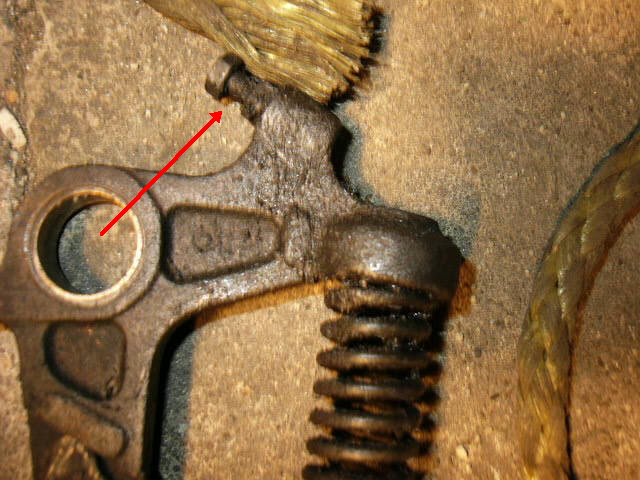 |
| Unscrew the screw until the head of the
screw touches the caliper body. In this photo my hand is near
the end of the screwdriver, turning a wrench. When you
continue to unscrew the screw, it pushes against the caliper body, and
it levers the linkage outward. Keep unscrewing until the outside
bar of the linkage touches the metal collar, the red arrow on the
right; and until the triangular plate touches the inside bar
(spring side) of the linkage. |
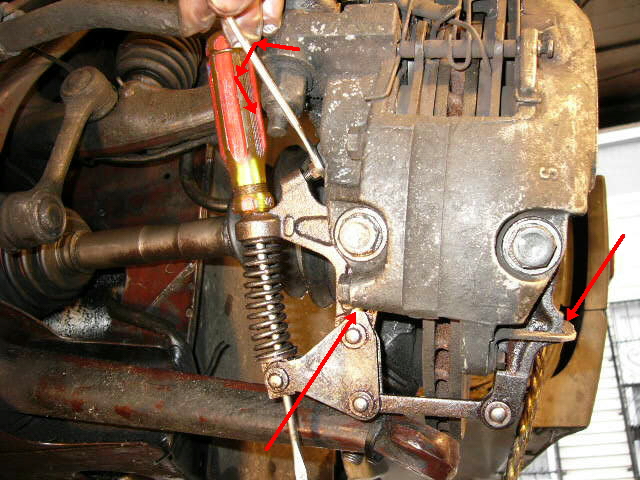 |
| Here's another view of the stop point on
the inside bar (spring side) of the linkage. The red arrows show
where they will touch. |
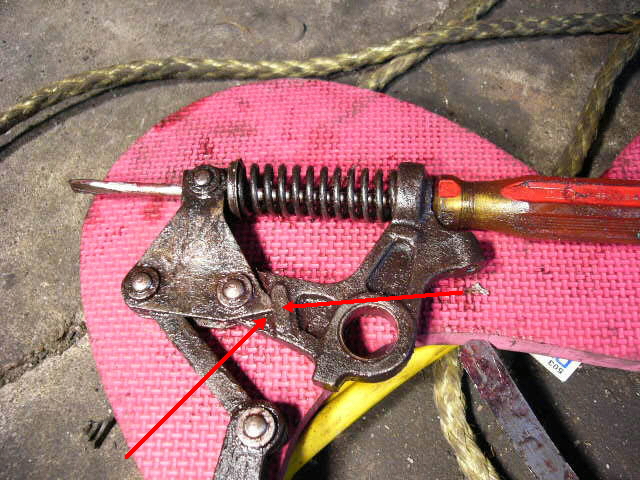 |
| Before moving to the next step, set your
torque wrench and put your 17mm socket on it. You won't have
time to do this later. |
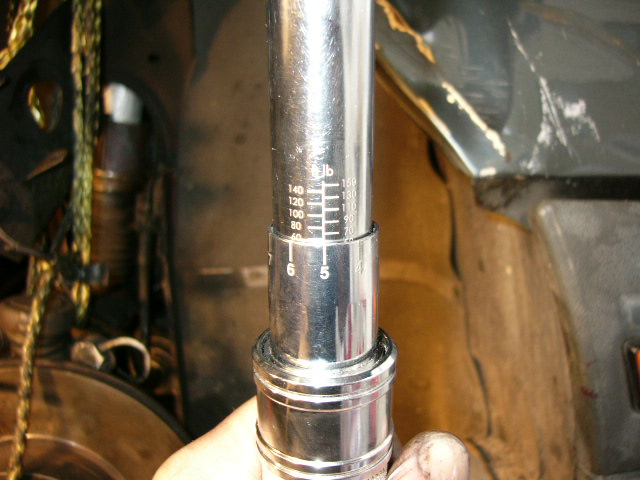 |
| Now it's time to adjust the eccentrics.
Remember CLOCKWISE FROM THE REAR. You turn the tool
in a clockwise direction when looking at the rear of the caliper.
When you tighten the retaining bolts, what direction is it?
Clockwise. So, if you had set the eccentrics in a
counter-clockwise direction, you might loosen their grip on the pads
when you tighten the retaining bolts. If you set the
eccentrics in a clockwise direction then the tightening motion will
only push them closer to the pad. The shop manuals recommend to
adjust the eccentrics until the pads are just touching the disc at
maximum runout. |
| I've found the feeler gauge to be
indispensable in this job. |
| Put the feeler gauge up between the
handbrake pad and the brake disc. Turn the eccentric clockwise.
This pushes the pad against the disc. Turn the eccentric until
the feeler gauge is suspended. |
 |
| I use an allen key / hex key for
this job.
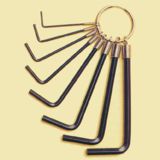
In a moment, you'll see why. |
| Use the allen key and turn the eccentric
in the other direction, loosening the eccentric's pressure on the pad, |
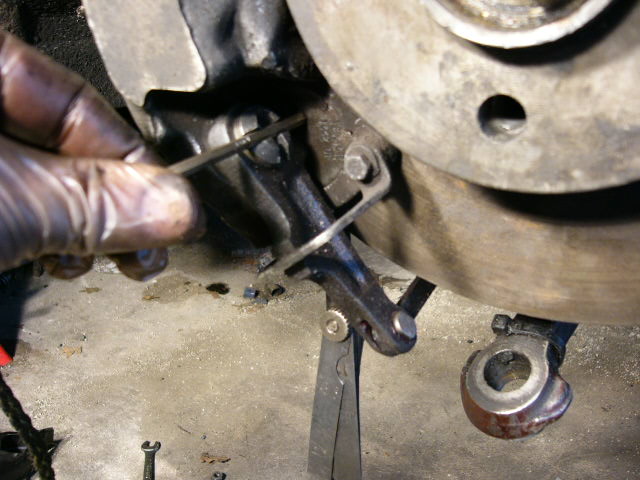 |
| Until the feeler gauge set falls to the
ground. It won't be too much of a turn. Just a few
degrees. |
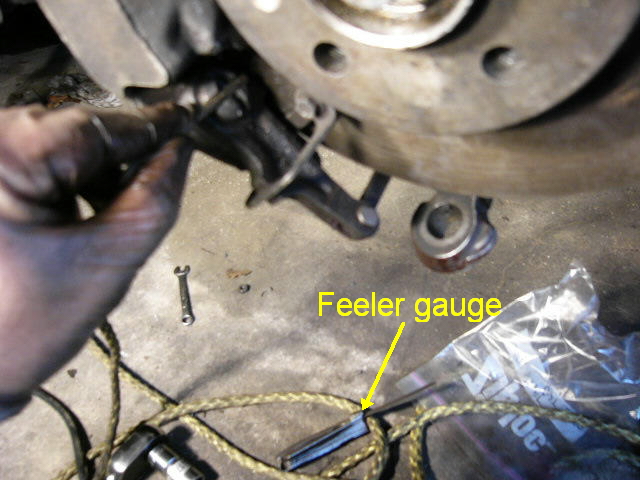 |
| If you tightened the retaining bolts
enough, the eccentric will stay at the place where the feeler fell to
the ground. |
| Take the allen wrench and set the long
arm so that it is most parallel to the disc. The short arm
should point towards the disc. Use your feeler gauges to fill the gap
between the end of the allen wrench and the disc. If you can't
get a good spot on the disc to prop up the allen key, use
another part, perhaps on the caliper. The purpose is to keep the
eccentric from moving when the retaining bolt is being tightened. |
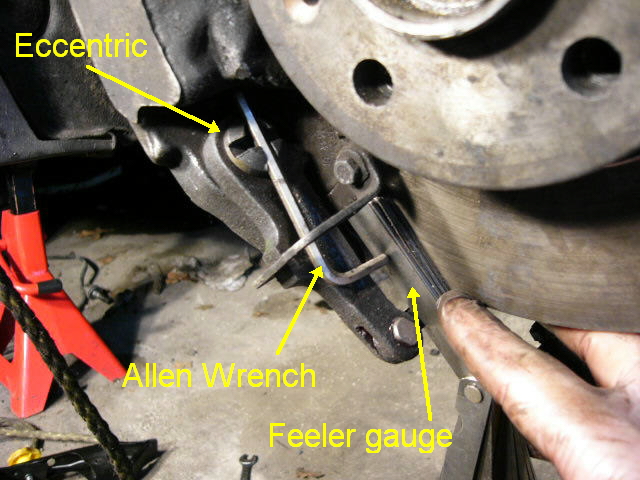 |
| Tighten the retaining bolt with your
torque wrench. |
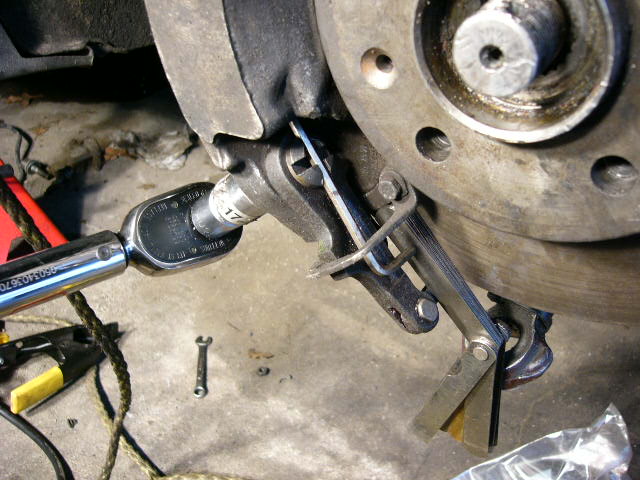 |
| The allen key locks the eccentric into
position, because it is braced against the disc, through the stack of
feeler gauges. This is A LOT of torque. The allen
key was starting to bend at the last few pushes with the wrench.
I think this is the main reasons most people's handbrakes lose
adjustment - the retaining bolts were not tight enough. |
| |
| |